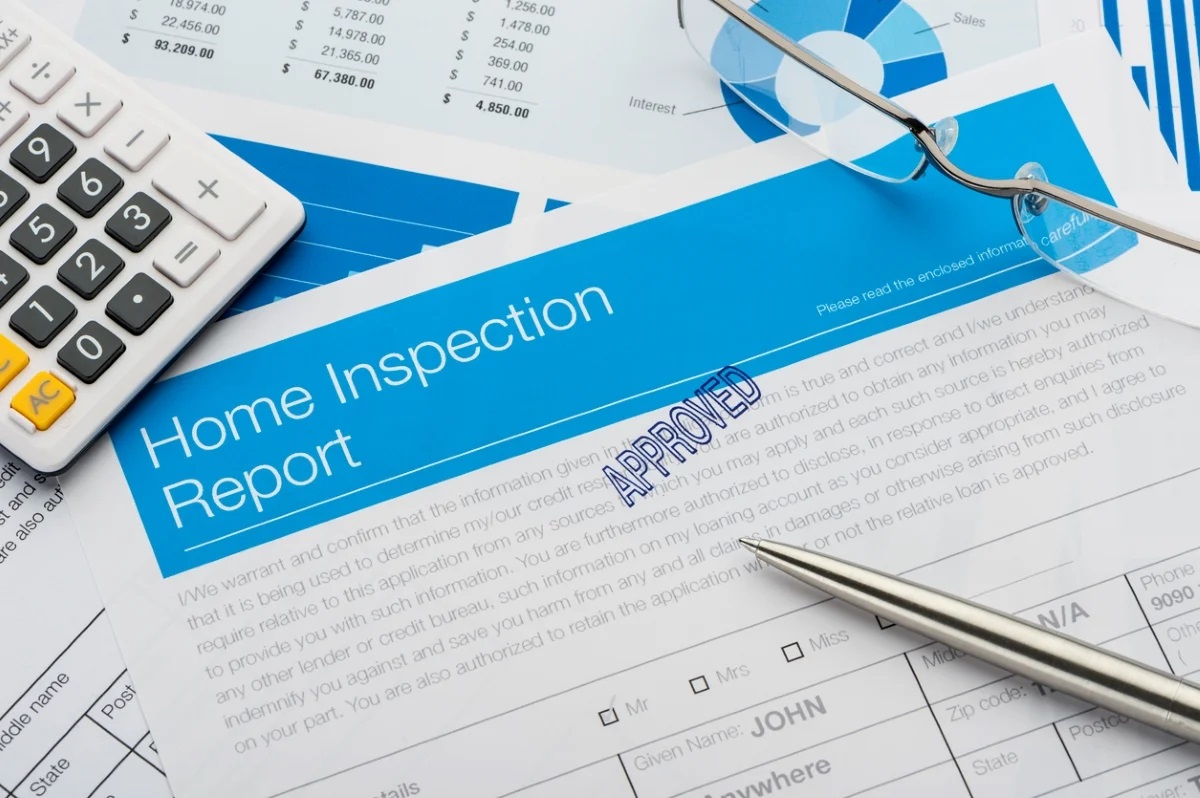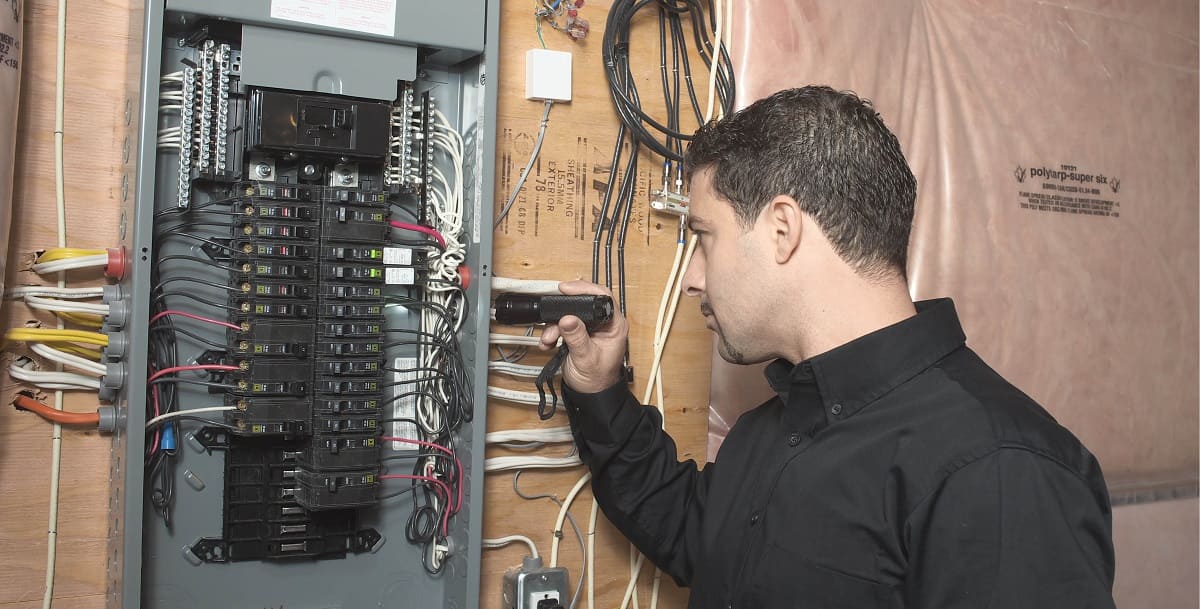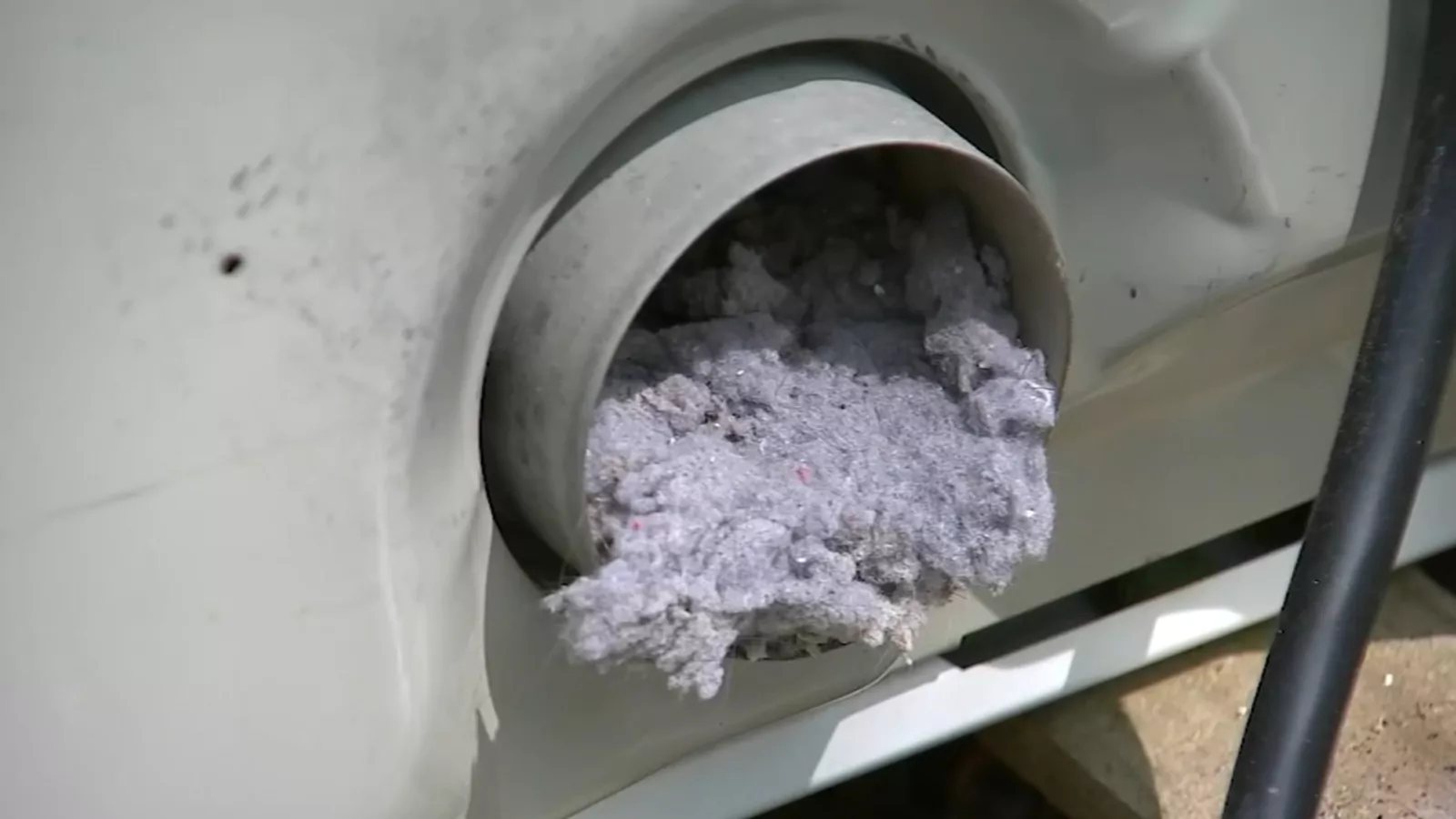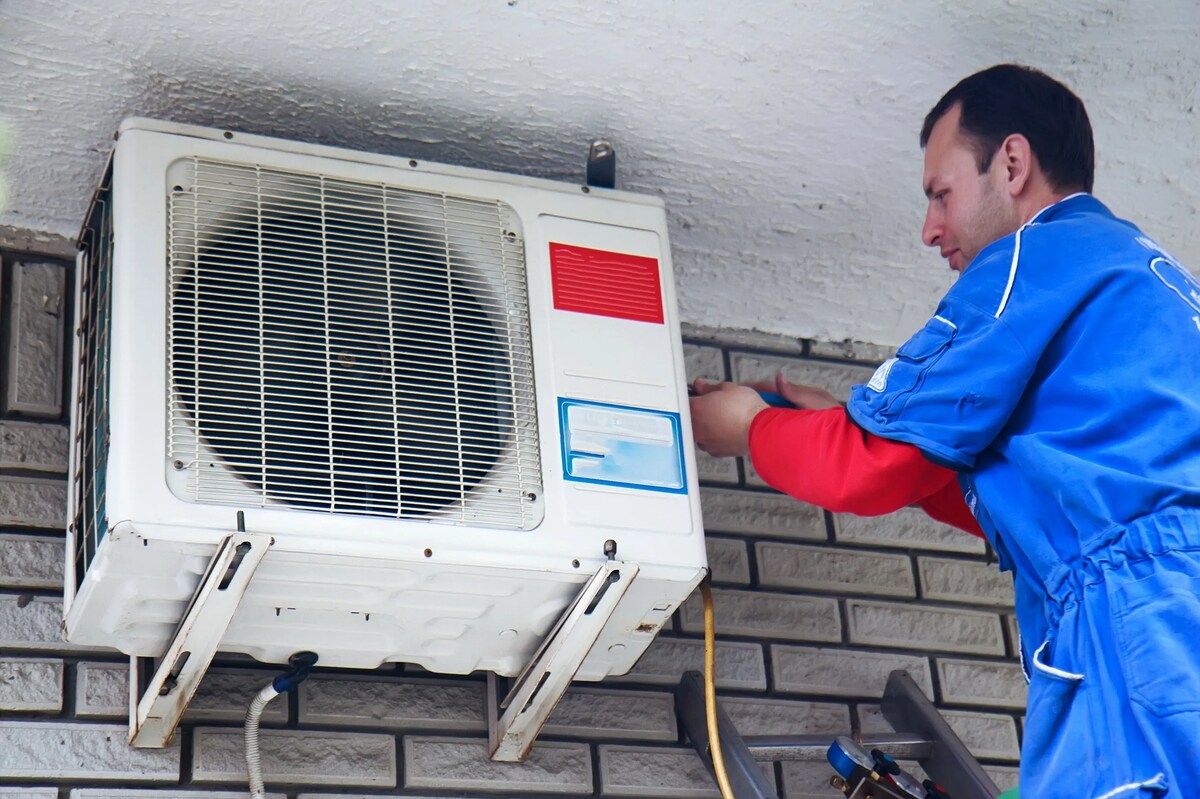Home>Home Maintenance>How Long Does A Buyer Have To Take Action After A Home Inspection?


Home Maintenance
How Long Does A Buyer Have To Take Action After A Home Inspection?
Modified: March 6, 2024
Discover how long a buyer has to take action after a home inspection and ensure your home maintenance is on track. Learn more about home inspections and buyer deadlines.
(Many of the links in this article redirect to a specific reviewed product. Your purchase of these products through affiliate links helps to generate commission for Storables.com, at no extra cost. Learn more)
Introduction
Buying a home is an exciting milestone in anyone’s life. It’s a significant investment, and you want to ensure that you’re making the right choice. That’s where a home inspection comes in. A home inspection is a crucial step in the home buying process that helps you understand the condition of the property.
During a home inspection, a qualified professional thoroughly examines the property, identifying any potential issues or areas of concern. This comprehensive evaluation provides buyers with valuable insights into the home’s overall condition, allowing them to make informed decisions.
In this article, we will delve into the home inspection process and explore how long buyers typically have to take action after receiving the inspection report. We’ll discuss the factors that can affect this timeframe and the steps buyers can take to negotiate repairs or credits with the seller. By understanding these aspects, you’ll be well-equipped to navigate the post-inspection stage and proceed with confidence towards closing the deal on your dream home.
Key Takeaways:
- Home inspections help buyers understand a home’s condition and negotiate repairs or credits with the seller. It’s crucial to act promptly and prioritize safety and functionality when addressing inspection findings.
- After negotiating repairs or credits, buyers can proceed with the purchase by fulfilling contingencies, arranging financing, and conducting a final walkthrough. Working closely with a real estate agent ensures a smooth home buying experience.
Understanding the Home Inspection Process
The home inspection process is a critical component of the home buying journey. It involves a detailed assessment of the property’s structural and mechanical systems to identify any potential issues or areas in need of repair. Understanding the steps involved in a home inspection can help buyers navigate this phase with clarity.
Firstly, it’s important to note that home inspections are typically conducted by licensed and experienced home inspectors. These professionals have the knowledge and expertise to thoroughly evaluate a property and provide an unbiased assessment.
During the inspection, the inspector will assess various aspects of the home, including the foundation, roofing, plumbing, electrical systems, HVAC (heating, ventilation, and air conditioning), and more. They will also check for any signs of water damage, mold, pests, and other potential hazards.
While the inspection does not cover cosmetic issues or general wear and tear, it focuses on identifying significant problems that may require immediate attention or affect the home’s safety and functionality.
Important: It’s essential for buyers to be present during the inspection. This allows you to ask questions, gain a better understanding of the property’s condition, and receive recommendations from the inspector on maintenance or repairs.
After completing the inspection, the home inspector will provide a detailed report outlining their findings. The report typically includes descriptions, photographs, and recommendations for repairs or further evaluation by specialists if needed.
Armed with this information, buyers can then evaluate the inspection findings and make informed decisions regarding their purchase. It’s essential to remember that no home is perfect, and minor issues are usually expected. The key is to identify and address any significant concerns that may impact the home’s value or your future living experience.
Now that we have a clear understanding of the home inspection process, let’s explore why home inspections are so crucial for buyers.
Importance of Home Inspections for Buyers
Home inspections are a vital step in the home buying process, and they hold immense importance for buyers. Here are a few key reasons why:
- Uncover Potential Issues: A home inspection helps buyers identify any hidden problems or potential issues that may not be visible during a regular walkthrough. It gives you a comprehensive understanding of the home’s condition and allows you to make an informed decision about its purchase.
- Ensure Safety and Functionality: By thoroughly examining the various systems and components of a home, inspectors can identify any safety hazards or issues that could affect the home’s functionality. This ensures that you are aware of any repairs or improvements needed to maintain a safe living environment.
- Budgeting for Repairs: The inspection report provides valuable insights into the condition of the property, including any necessary repairs or maintenance tasks. This information allows buyers to budget for these expenses and factor them into the overall cost of the home.
- Negotiation Power: The information gained from a home inspection empowers buyers during the negotiation process. If significant issues are discovered, buyers can request repairs or credits from the seller or negotiate a lower purchase price based on the estimated cost of necessary repairs.
- Peace of Mind: A thorough home inspection offers peace of mind. It allows buyers to confidently move forward with their purchase, knowing that they have a clear understanding of the property’s condition and any potential future expenses.
It’s important to note that home inspections are not solely for older homes. Even new construction properties can have defects or construction errors that may not be apparent to the untrained eye. Regardless of the age or condition of the home, a professional inspection is recommended to protect your investment.
Now that we understand the significance of home inspections, let’s explore what aspects a home inspector typically covers during their evaluation.
What Does a Home Inspection Cover?
A comprehensive home inspection covers various aspects of a property to ensure a thorough evaluation. While the specific details will vary depending on the inspector and the property, here are some key areas that a home inspection typically covers:
- Structural Components: The home inspector will examine the foundation, walls, roof, and other structural elements to assess their condition and identify any signs of damage or instability.
- Roofing: The inspector will inspect the roofing material, gutters, and downspouts to check for any leaks, damage, or signs of wear that may require repairs or replacement.
- Plumbing System: This includes checking the water supply and drainage systems for leaks, proper functioning, and water pressure. The inspector may also evaluate the condition of pipes, fixtures, and water heating systems.
- Electrical System: The inspector will assess the electrical panel, wiring, outlets, switches, and fixtures to ensure they are up to code and functioning safely.
- Heating, Ventilation, and Air Conditioning (HVAC): The inspector will evaluate the HVAC systems, including the furnace, air conditioning unit, and ductwork, to ensure they are operating efficiently and safely.
- Insulation and Ventilation: The inspector will check the insulation in the attic, walls, and crawl spaces, as well as assess ventilation systems to ensure proper airflow and energy efficiency.
- Interior and Exterior: This includes examining doors, windows, walls, ceilings, floors, staircases, and exteriors for any damage, signs of water intrusion, or other issues.
- Appliances and Fixtures: The inspector may test and evaluate the functionality of appliances, such as the dishwasher, stove, and microwave, as well as fixtures like faucets and toilets.
- Radon and Mold: In areas where radon or mold is a concern, the inspector may perform additional tests or assessments to check for their presence.
It’s important to note that while a home inspection is thorough, it cannot uncover every possible issue. For example, hidden defects or problems behind walls or under the ground may not be detectable during a typical inspection. However, a skilled and experienced home inspector will do their best to identify any visible or apparent issues.
Once the home inspection is complete, you will receive a detailed report outlining the inspector’s findings. In the next section, we’ll discuss what to expect when reviewing the inspection report.
Receiving the Home Inspection Report
After the home inspection is conducted, the next step is receiving the home inspection report. This document is a detailed account of the findings and observations made by the inspector during the evaluation of the property.
The home inspection report provides an overview of the condition of the home, outlining any issues or concerns that were identified during the inspection. It is essential that buyers thoroughly review and understand the report, as it will guide their decision-making process.
Typically, the home inspector will provide the report within a few days after the inspection. The report may be in written form, often in a digital format, and it should include descriptions, photographs, and sometimes even videos to support the findings.
Here are some key elements that you can expect to find in a typical home inspection report:
- Summary: The report may start with a summary section, highlighting the major findings and significant issues discovered during the inspection.
- Detailed Findings: The main body of the report will provide a comprehensive breakdown of the findings for each area of the home that was inspected. This may include the condition of the structural components, roofing, plumbing, electrical systems, HVAC, and more.
- Photographic Evidence: The report should include clear photographs or videos that highlight any observed issues. These visuals help provide a better understanding of the problems and can assist in future discussions or negotiations.
- Severity and Recommendations: The report will indicate the severity of each issue identified, ranging from minor to significant. It may also include recommendations for repairs or further evaluation by specialists, if necessary.
- Inspector’s Contact Information: The report should include the inspector’s contact information, allowing you to reach out with any questions or concerns that may arise after reviewing the report.
When reviewing the report, pay close attention to any red flags or major concerns that could impact the home’s safety, functionality, or value. It’s essential to have a clear understanding of the inspector’s findings before making any decisions regarding your offer or moving forward with the purchase process.
In the next section, we will discuss how buyers can evaluate the inspection findings and make informed decisions based on the information provided in the report.
Evaluating the Inspection Findings
Once you have received the home inspection report, it is crucial to evaluate the findings thoroughly. Understanding the inspection findings will help you make informed decisions regarding your offer and any necessary repairs or negotiations with the seller. Here are some key steps to consider when evaluating the inspection findings:
1. Review the Summary: Start by reading the summary section of the report. This section highlights the major issues discovered during the inspection and provides a quick overview of the property’s condition. Pay close attention to any significant concerns that could impact the home’s safety, functionality, or value.
2. Assess the Severity of Issues: In the detailed findings section, the inspector will have outlined the severity of each issue discovered, ranging from minor to significant. Focus on the significant issues that may require immediate attention or have a significant impact on your decision to proceed with the purchase.
3. Consider Potential Repair Costs: Take note of the recommended repairs or further evaluation suggested by the inspector. Research and get estimates for the cost of these repairs to have a clear understanding of the potential financial impact.
4. Seek Professional Advice: If you have concerns or questions about specific findings in the report, consider consulting with professionals such as contractors, electricians, or HVAC specialists for further evaluation or estimates.
5. Prioritize Safety and Functionality: Focus on issues that may compromise the safety and functionality of the home. These should take precedence when considering repairs or negotiations with the seller.
6. Evaluate Long-Term Implications: Take into account any findings that may have long-term implications for the property. For example, structural issues or outdated electrical systems may require ongoing maintenance and potentially impact future resale value.
7. Consider Your Budget: Evaluate the potential repair costs and your budget. Determine whether you have the financial means to address any necessary repairs following the purchase of the home.
8. Consult Your Real Estate Agent: Discuss the inspection findings with your real estate agent. They can provide guidance and help you navigate the next steps, including negotiations with the seller.
By carefully evaluating the inspection findings, you can determine which issues are deal-breakers and which ones can be addressed through repairs or negotiations. In the next section, we will discuss the timeframe buyers typically have to take action based on the inspection results.
After a home inspection, the buyer typically has 5-10 days to take action, depending on the terms of the purchase agreement. It’s important to review the contract and act promptly to address any issues.
Making a Decision After the Home Inspection
After evaluating the inspection findings, it’s time to make a decision regarding your potential purchase of the home. Here are some key factors to consider when making your decision:
1. Significance and Severity of Issues: Assess the significance and severity of the issues uncovered during the inspection. Determine if these issues are deal-breakers or if they can be addressed through repairs or negotiations with the seller.
2. Budget and Financial Considerations: Take into account the potential repair costs and your budget. Consider whether you have the financial means to address any necessary repairs or if it will put a strain on your finances.
3. Safety and Functionality: Prioritize issues that directly impact the safety and functionality of the home. Consider how these issues may affect your ability to live comfortably and securely in the property.
4. Long-Term Implications: Think about the long-term implications of the inspection findings. Consider how these issues may impact the future value of the home and your ability to resell it in the future.
5. Negotiation Potential: If there are significant issues, consider negotiating with the seller for repairs or credits. Discuss with your real estate agent to determine the best approach and strategies for negotiations.
6. Timeframe: Consider the timeframe for taking action based on the inspection results. Determine how much time you have to make a decision, negotiate repairs or credits, and proceed with the purchase process.
7. Overall Comfort and Confidence: Trust your instincts and consider how you feel about the property overall. If you have reservations or doubts, it may be wise to reconsider the purchase.
It’s important to keep in mind that no home is perfect, and minor issues are common. The key is to address significant problems and ensure that you are comfortable with the condition of the property before proceeding with the purchase.
If you decide to move forward with the purchase, you will need to determine how long you have to take action based on the inspection findings. Let’s explore this in detail in the next section.
How Long Does a Buyer Have to Take Action?
The timeline for taking action after a home inspection can vary depending on various factors, including local customs, the terms of the purchase agreement, and negotiations between the buyer and seller. Typically, buyers have a limited timeframe to address the inspection findings and make decisions regarding their purchase. Here are a few considerations regarding the timeframe:
1. Contractual Obligations: The terms outlined in the purchase agreement dictate the timeline for taking action after the home inspection. It’s crucial to review the agreement carefully and understand any deadlines or contingencies related to the inspection process.
2. Negotiations: If the inspection reveals significant issues, buyers may negotiate with the seller to address those concerns. The negotiation process can take time, and it’s important to communicate effectively to reach an agreement that satisfies both parties.
3. Response Time: Once the inspection report is received, it is customary for the buyer to respond within a specific timeframe. This timeframe may vary depending on local practices or the terms of the purchase agreement. Typically, it is recommended to respond within a few business days to keep the transaction moving forward.
4. Repair Estimates: If repairs are requested or negotiations for credits are proposed, additional time may be required to obtain repair estimates from contractors or specialists. It’s important to collect multiple quotes to ensure accuracy and make informed decisions.
5. Financial Considerations: Before moving forward with the purchase, buyers may need to assess their financial capacity to address the necessary repairs or negotiate costs with the seller. It’s important to include ample time for financial evaluation and decision-making.
6. Contingency Period: In some cases, buyers may include a contingency period in the purchase agreement, which allows them to back out of the deal if the inspection reveals significant issues. This contingency period specifies a timeframe within which the buyer can terminate the agreement without repercussions.
It’s crucial to communicate with your real estate agent and review the purchase agreement to understand the specific timeline and obligations related to the home inspection. This will ensure that you meet all necessary deadlines and make informed decisions within the given timeframe.
Next, let’s discuss the factors that can affect the timeframe for addressing the inspection findings and negotiating repairs or credits with the seller.
Factors Affecting the Timeframe
Several factors can influence the timeframe for addressing the inspection findings and negotiating repairs or credits with the seller. Understanding these factors will help you navigate the process effectively and ensure that you have enough time to make informed decisions. Here are some key factors to consider:
1. Purchase Agreement Terms: The terms outlined in the purchase agreement play a significant role in determining the timeframe for addressing the inspection findings. This includes any specific deadlines or contingencies related to the inspection process.
2. Complexity of the Issues: The complexity and extent of the issues identified during the inspection can impact the timeframe. Minor repairs or cosmetic issues may be resolved relatively quickly, while more significant concerns may require additional time for evaluation and negotiations.
3. Coordination with Professionals: If specialists or contractors need to be involved to assess or address specific issues, it may take time to schedule their appointments and receive their evaluations or repair estimates. Coordinating with these professionals can extend the overall timeframe.
4. Seller Response and Cooperation: The seller’s willingness to address the inspection findings and cooperate in the negotiation process can affect the timeframe. If the seller is prompt and responsive, it may expedite the resolution of issues. Conversely, if the seller is uncooperative or negotiations are challenging, it may prolong the process.
5. Availability of Repairs: The availability of contractors or professionals to perform the necessary repairs can impact the timeframe. If there is high demand or limited availability in your area, it may take longer to schedule and complete the repairs.
6. Buyer’s Decision-Making Process: The buyer’s own decision-making process can also affect the timeframe. Taking the time to thoroughly evaluate the inspection findings, consult with professionals, and assess financial considerations can prolong the overall process.
7. Market Conditions: The state of the real estate market can impact the timeframe. In a competitive market, buyers may feel pressured to make quick decisions, while in a slower market, there may be more flexibility and time for negotiations.
It’s crucial to be aware of these factors and account for them when planning the timeframe for addressing the inspection findings. Effective communication with your real estate agent, prompt responses, and proactive coordination with professionals involved will help ensure a smooth and efficient process.
In the next section, we will discuss how buyers can negotiate repairs or credits based on the inspection findings.
Negotiating Repairs or Credits
After receiving the inspection report and evaluating the findings, you may find it necessary to negotiate repairs or credits with the seller. Negotiation is a common practice in real estate transactions and can help address significant issues identified during the inspection. Here are some steps to consider when negotiating repairs or credits:
1. Prioritize Important Repairs: Determine which repairs are crucial to the safety, functionality, or value of the home. Focus on addressing these issues during the negotiation process.
2. Consult with Professionals: Seek advice from contractors, specialists, or professionals in the relevant fields to obtain repair estimates or validate the severity of the issues identified. Their expertise will provide credibility during negotiations.
3. Submit a Repair Request: Prepare a detailed repair request outlining the specific repairs needed based on the inspection findings. Present this request to the seller or their agent, clearly communicating the rationale behind each requested repair.
4. Be Reasonable and Flexible: Approach negotiations with a reasonable and flexible mindset. Understand that not all repair requests may be fulfilled, and be open to counteroffers or alternatives proposed by the seller.
5. Negotiate Credits as an Alternative: Instead of requesting repairs, you may negotiate for a monetary credit at closing to cover the cost of addressing the identified issues. This can provide more flexibility for both parties.
6. Keep Emotions in Check: Maintain a professional and objective approach during negotiations. Remember that it is a business transaction, and emotions can hinder productive discussions.
7. Seek Guidance from Your Real Estate Agent: Work closely with your real estate agent, who will provide valuable insights and guidance throughout the negotiation process. Their experience and knowledge of the local market can be instrumental in securing favorable outcomes.
8. Document Agreements in Writing: Once an agreement is reached, ensure that all agreed-upon repairs or credits are documented in writing as an addendum to the purchase agreement. Include deadlines for completion and any financial arrangements.
It’s important to approach negotiations with clear objectives and a mindset of finding a mutually beneficial solution. The goal is to reach an agreement that addresses the identified issues and satisfies both parties involved.
Finally, after negotiating repairs or credits, it’s time to move forward with the purchase. In the following section, we will discuss the next steps in the home buying process.
Moving Forward with the Purchase
Once you have successfully navigated the home inspection process, addressed any necessary repairs or negotiated credits with the seller, and reached an agreement, it’s time to move forward with the purchase. Here are the key steps involved in moving forward:
1. Proceed with Financing: If you haven’t already done so, continue with the necessary steps to secure financing for your home purchase. This may include submitting documentation to your lender, completing the mortgage application process, and satisfying any other lender requirements.
2. Fulfill Additional Contingencies: In addition to the inspection contingency, there may be other contingencies specified in the purchase agreement, such as the appraisal or financing contingencies. Ensure that you meet these contingencies within the specified timelines.
3. Arrange for Repairs: If repairs were agreed upon as part of the negotiation process, coordinate with the seller to schedule and complete the necessary repairs before closing. Keep clear communication with the seller or their agent and ensure that the repairs are carried out to your satisfaction and within the agreed-upon timeframe.
4. Conduct a Final Walkthrough: Prior to closing, schedule a final walkthrough of the property to ensure that it is in the agreed-upon condition and that all repairs have been completed as agreed. This is an opportunity to verify that everything is in order and to address any last-minute concerns before signing the final documents.
5. Sign Closing Documents: On the day of closing, you will meet with the necessary parties, including your real estate agent, the seller, and a representative from the title company or attorney’s office. You will review and sign all the necessary paperwork to complete the transaction.
6. Fund the Purchase: After signing the closing documents, you will need to provide the necessary funds to finalize the purchase. This may include paying the down payment, closing costs, and any other agreed-upon payments.
7. Receive the Keys and Take Possession: Once the funds have been provided and the transaction is officially closed, you will receive the keys to your new home. At this point, you officially take possession of the property and can begin the process of making it your own.
Remember to refer to your real estate agent or attorney for guidance and support throughout the closing process. They will help ensure that all necessary steps are completed smoothly and that you have a clear understanding of your rights and responsibilities as the new homeowner.
Congratulations on successfully navigating the home inspection process and moving forward with your purchase. Now, enjoy your new home and create wonderful memories in it!
If you have any more questions or need further assistance, feel free to reach out to our team. Happy home buying!
Conclusion
The home inspection process is an essential step in the home buying journey. It provides buyers with invaluable information about the condition of the property and helps them make informed decisions. By thoroughly evaluating the inspection findings, buyers can prioritize repairs, negotiate with the seller, and move forward confidently with their purchase.
During the home inspection, qualified professionals assess various aspects of the home, including its structure, roofing, plumbing, electrical systems, and more. They identify any issues or concerns that may affect the home’s safety, functionality, or value.
Receiving the home inspection report allows buyers to review the detailed findings, photographs, and recommendations provided by the inspector. Understanding the severity and significance of the issues identified empowers buyers to take action and make informed decisions regarding their purchase.
The timeframe for taking action after the home inspection may vary depending on contractual obligations, negotiation processes, and the complexity of the issues at hand. Buyers must communicate promptly, evaluate repair costs, and seek professional advice when necessary to adhere to the established timeline.
Negotiating repairs or credits with the seller is a common practice after the inspection process. By prioritizing important repairs, consulting professionals, and maintaining open communication, buyers can effectively negotiate a mutually beneficial agreement.
Once repairs or credits have been addressed, buyers can proceed with the purchase by fulfilling additional contingencies, arranging for financing, conducting a final walkthrough, signing closing documents, and funding the purchase. The keys to the new home symbolize the official possession and the beginning of a new chapter for the buyer.
Remember, throughout the entire process, it is essential to work closely with a trusted real estate agent who can provide guidance, support, and expert advice. Their knowledge and experience will help navigate potential challenges and ensure a smooth and successful home buying experience.
Congratulations on embarking on this exciting journey of homeownership. With a thorough understanding of the home inspection process and a proactive approach to decision-making, you are well-equipped to make a sound investment and create a happy and comfortable home for years to come.
If you have any further questions or need assistance, don’t hesitate to reach out to our team. Happy home buying!
Frequently Asked Questions about How Long Does A Buyer Have To Take Action After A Home Inspection?
Was this page helpful?
At Storables.com, we guarantee accurate and reliable information. Our content, validated by Expert Board Contributors, is crafted following stringent Editorial Policies. We're committed to providing you with well-researched, expert-backed insights for all your informational needs.














0 thoughts on “How Long Does A Buyer Have To Take Action After A Home Inspection?”